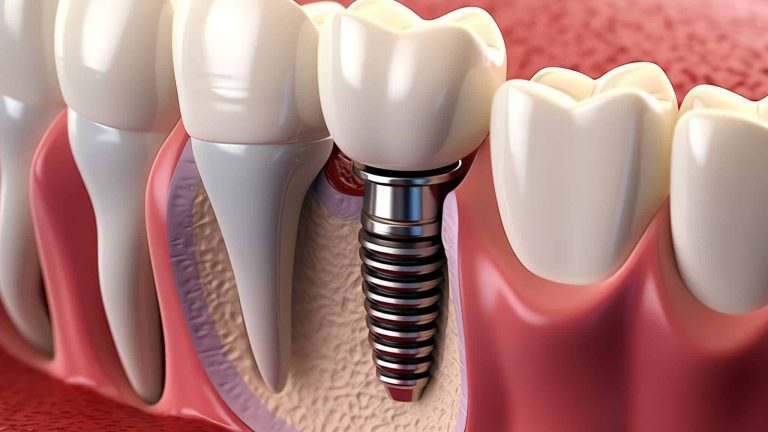Orthodontic treatment for children and adolescents has evolved considerably in recent years. For many young people, the idea of wearing traditional braces can generate anxiety, discomfort, and concerns about their appearance during a key stage of their social and emotional development. However, with advances in technology, invisible orthodontics has gained popularity as a more discreet and comfortable alternative for correcting dental alignment issues.
This article explores whether invisible orthodontics is a viable option for children and adolescents, the benefits it offers, and how it can positively impact their self-esteem, allowing them to maintain a healthy smile while facing fewer interruptions in their daily lives.
What Is Invisible Orthodontics?
Invisible orthodontics refers to clear aligners, such as those from well-known brands like Invisalign, which are custom-made for each patient. These aligners are designed to gradually move the teeth into their correct position without the need for visible metal braces.
Unlike traditional braces, invisible aligners are removable, meaning that patients can take them off during meals or when brushing their teeth, improving oral hygiene and reducing dietary restrictions.
Is It Viable for Children and Adolescents?
Historically, invisible orthodontics has been more common in adults, but in recent years it has proven to be a viable option for adolescents and, in some cases, for younger children. However, before opting for this type of treatment, several factors must be considered to determine if it is suitable for the patient.
Age and Dental Development
Dental development is crucial to determining the viability of invisible orthodontics in children. It is essential that the child or adolescent has lost most of their baby teeth and that the permanent teeth have fully erupted. In most cases, adolescents between 12 and 18 years old are ideal candidates, as their mouths are fully developed.
- For younger children: Invisible orthodontics may not be the best option in cases where they are still in the process of losing baby teeth, although there are special versions adapted for children who are transitioning between baby and permanent teeth.
Patient Commitment and Responsibility
One of the biggest factors to consider is the young patient’s commitment. Unlike traditional braces, which are fixed to the teeth, invisible aligners are removable, requiring discipline on the patient’s part. Aligners must be worn for 20 to 22 hours a day for the treatment to be effective.
- Responsible teenagers: Adolescents who are responsible and motivated are usually good candidates for invisible orthodontics, as they follow the treatment instructions and ensure they wear the aligners for the necessary time.
- Younger children: For younger children, the responsibility of wearing the aligners for the appropriate amount of time may be harder to manage. In these cases, it is crucial that parents closely monitor the use of the aligners.
Severity of Dental Problems
Invisible orthodontics is effective in correcting many common dental alignment issues, such as crowding, spacing, and mild to moderate malocclusions. However, in more complex cases, such as severe malocclusions or very crooked teeth, traditional braces may be a more suitable option.
- Dental evaluation: An orthodontist must evaluate each case individually to determine if invisible aligners are the best option. In some cases, the treatment may be combined with other orthodontic devices for optimal results.
Benefits of Invisible Orthodontics for Children and Adolescents
Invisible orthodontics offers a number of benefits that make it an attractive option for children and adolescents. In addition to being effective in correcting dental problems, it also provides aesthetic and practical advantages that can improve the treatment experience.
1. Discretion and Aesthetics
One of the main benefits of invisible aligners is that they are virtually imperceptible. For teenagers, who are often very conscious of their appearance, invisible orthodontics allows them to receive treatment without the metallic look of traditional braces. This reduces the anxiety related to aesthetics during treatment and gives them more confidence to smile and socialize.
- Impact on self-esteem: Teenagers may feel more comfortable in their school and social environment, knowing that their orthodontic treatment is less visible. This can have a positive effect on their self-esteem, especially during a stage of life when personal image is so important.
2. Greater Comfort
Unlike traditional braces, which can cause irritation to the cheeks and gums, invisible aligners are made of a soft, comfortable material. There are no wires or sharp parts that cause sores or discomfort, making the treatment more bearable for young people.
- Fewer emergencies: With traditional braces, teenagers may face orthodontic emergencies such as loose wires or broken brackets, which require additional visits to the orthodontist. Invisible aligners eliminate these risks.
3. Improved Oral Hygiene
Oral hygiene is easier to maintain with invisible aligners because they are removable. This means that teenagers can brush and floss without any obstacles, reducing the risk of cavities and gum disease during orthodontic treatment.
- Prevention of stains: With traditional braces, food residues can get trapped between the brackets and wires, which can cause stains on the teeth. With invisible aligners, teenagers can remove the aligners to eat, making thorough cleaning easier.
4. Fewer Food Restrictions
With traditional braces, certain foods are off-limits, such as corn, nuts, popcorn, or hard candies, as they can damage the brackets or wires. Invisible aligners eliminate these restrictions, as they can be removed before eating. This gives teenagers more freedom to enjoy their favorite foods without worry.
5. Reduced Time in the Office
Although the duration of treatment varies depending on the case, invisible orthodontics generally requires fewer visits to the orthodontist compared to traditional braces. Adjustment appointments and emergencies are less frequent, making the process easier for both teenagers and their parents.
Impact on Self-Esteem and Emotional Well-Being
The psychological impact of orthodontics, especially in adolescents, should not be underestimated. For many young people, physical appearance is an important source of confidence or, in some cases, insecurity. Teenagers wearing traditional braces often report feeling embarrassed or uncomfortable when speaking, laughing, or socializing, especially at the beginning of treatment.
With invisible orthodontics, this issue is minimized. Clear aligners allow teenagers to undergo orthodontic treatment without drawing attention to their teeth. As a result, many young people experience an improvement in their confidence and emotional well-being while correcting their smile.
- Greater willingness to smile: Not having to worry about their appearance, teenagers are more likely to smile and engage in social activities. This can have a positive impact on their relationships and school life.
Final Considerations: Is Invisible Orthodontics the Best Option for Your Child?
Invisible orthodontics can be an excellent option for responsible teenagers who are motivated to follow the treatment properly. While it offers multiple aesthetic and practical benefits, it is important to ensure that the teenager is committed to wearing the aligners as directed by the orthodontist.
Each case is unique, and the best way to determine if invisible orthodontics is right for your child is to consult with an experienced orthodontist. At Clínicas La Guardia, our professionals are trained to evaluate each case and recommend the most appropriate treatment to achieve a beautiful and healthy smile.
If you are interested in finding out if invisible orthodontics is a viable option for your child or teenager, schedule a consultation with us. Together, we can discuss the options and help your child achieve the smile they deserve, with the confidence and well-being they need.



